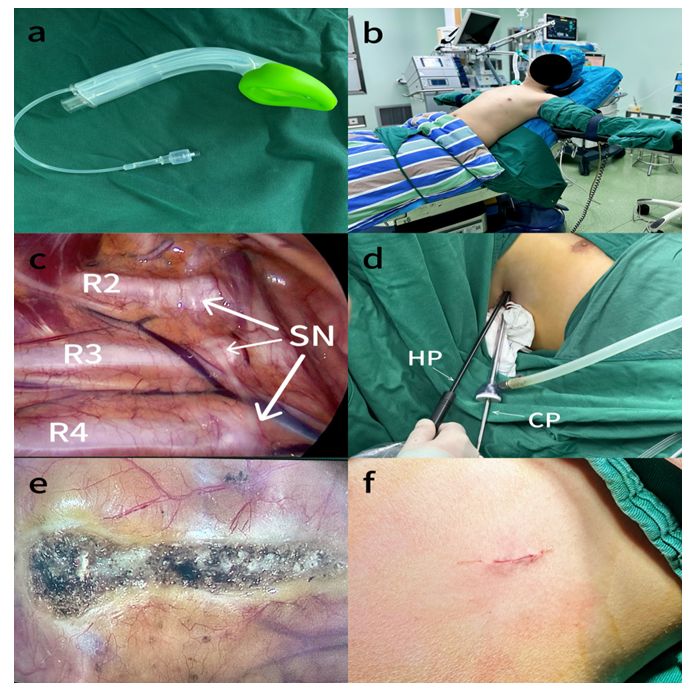Assessment of Psychological Status in Erythrophobia Patients before and after Endoscopic Thoracic Sympathectomy
##plugins.themes.bootstrap3.article.main##
Abstract
Background Erythrophobia is a psychiatric disorder characterized by social anxiety triggered by facial blushing. It does not respond to pharmacological and psychological interventions for many patients with erythrophobia. Endoscopic thoracic sympathectomy (ETS) is an effective minimally invasive surgery for the treatment of erythrophobia. This study aims to assess the psychological status of patients with erythrophobia before and after ETS using standardized psychometric tools.
Methods Erythrophobia patients treated by ETS in the Second Hospital of Anhui Medical University from June of 2019 to August of 2021 were enrolled. Electronic questionnaires and patient medical records were used to collect clinical data of patients, including sex, age, family history, body mass index (BMI), preoperative treatment history, postoperative improvement in facial blushing, compensatory hyperhidrosis (CH) and psychological status. The severity of CH was evaluated using the Hyperhidrosis Disease Severity Scale (HDSS). Psychological status was assessed by Self-Esteem Scale (SES), Social Avoidance and Distress Scale (SADS), Shyness Scale (SS) and Social Anxiety Scale (SAS).
Results The overall efficacy rate of ETS was 95.1% (39 cases), with complete resolution of blushing in 70.7% (29 cases), partial resolution in 24.4% (10 cases), and no improvement in 4.9% (2 case). Their overall satisfaction was 85.4% (35 cases), wherein 53.7% (22 cases) reported a high level of satisfaction, 31.7% (13 cases) moderate satisfaction, and 7.3% (3 cases) dissatisfaction. Interference with daily activities due to CH (HDSS grades 3 and 4) occurred in 14.6% of patients, all of whom were HDSS grade 3. The most commonly of CH affected areas were the chest and back (87.8%). SES scores increased from 24.29 ± 2.462 (preoperative) to 28.73 ± 2.481 (postoperative), indicating a significant boost in self-esteem (P < 0.001). SADS scores were 21.12 ± 2.610 before the surgery and 17.71 ± 2.667 after the surgery, presenting a visible improvement (P < 0.001). SS scores decreased from 39.22 ± 6.393 to 33.80 ± 7.639, showing significant improvement in shyness (P < 0.001). SAS scores decreased from 15.49 ± 3.835 to 12.98 ± 3.489, indicating a reduction in social anxiety (P = 0.003).
Conclusion ETS is an effective treatment for erythrophobia and it significantly improves the self-esteem, social avoidance and distress, shyness and social anxiety of patients.

